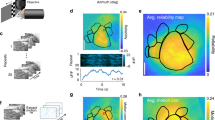Abstract
Recent psychophysical and neurophysiological studies have suggested that, in mammals, there are interactions between the P (colour processing) and M (motion processing) visual pathways, which were previously believed to be parallel and separate. In this study, the role colour information plays in the coding of object motion was determined in the tectofugal pathway of pigeons. The responses of motion-sensitive neurons in the tectum to moving stimuli formed by chromatic contrast were recorded extracellularly using standard single-unit recording techniques. A moving coloured object was presented on a uniform (opponent coloured) background (e.g. blue-on-yellow, red-on-green and black-on-white). Through systematically manipulation of the luminance contrast between object and background, an equiluminant condition was generated. It was found that, at chromatic equiluminance, the majority of cells maintain some level of response. The mean magnitude of the response at equiluminance was about one-third of the response at maximal contrast to the same chromatic border. These results suggest that tectal units can detect motion of a pattern defined by a pure colour contour, although the strength of output is considerably weaker than that for the movement of patterns formed by luminance contrast.
Similar content being viewed by others
Author information
Authors and Affiliations
Additional information
Received: 6 April 1996 / Accepted: 17 March 1997
Rights and permissions
About this article
Cite this article
Sun, HJ., Frost, B. Motion processing in pigeon tectum: equiluminant chromatic mechanisms. Exp Brain Res 116, 434–444 (1997). https://doi.org/10.1007/PL00005771
Issue Date:
DOI: https://doi.org/10.1007/PL00005771




